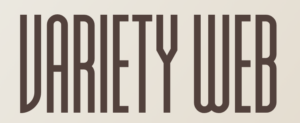
The Slow Movement, or “slow living movement,” emerged as a response to the relentless pace and productivity demands of modern life. This movement, which promotes a more mindful pace and a balanced approach to living, has expanded and gained traction over the years. But what is the future of the slow movement in a world where fast-paced digital content consumption prevails?
The Origin of the Slow Movement
The Slow Movement has its roots in the early 1980s, when a group of people began questioning the culture of acceleration. The seed for the movement was planted in 1986 in Rome when the Italian journalist Carlo Petrini protested against the opening of a McDonald’s in the Piazza di Spagna. Petrini advocated for local, artisanal, and carefully prepared food, leading to the creation of Slow Food, the first “slow” movement.
With the success of Slow Food, the idea of slowing down expanded to other areas of life, from work to leisure, and even education and tourism, creating a global movement known as the Slow Movement.
Slow Food: The Starting Point
Carlo Petrini’s protest was a stand against the homogenization of food and the loss of local culture. Slow Food promotes practices like eating locally sourced food, preserving biodiversity, and respecting food producers. More than just a food movement, Slow Food inspired a lifestyle philosophy that extends into other domains.

The “Slow” Concept Expands
From Slow Food, various branches emerged, including:
- Slow Travel: Encourages mindful tourism that focuses on experiencing local culture and environment rather than quick, superficial visits.
- Slow Living: Embraces a more intentional lifestyle that seeks to reduce stress, prioritize quality time, and simplify routines.
- Slow Work: Questions the culture of excessive productivity, proposing a more balanced and sustainable approach to work.
- Slow Education: Advocates for more personalized education, respecting each student’s learning pace.
Principles of the Slow Movement
The Slow Movement is guided by some fundamental principles:
- Quality over Quantity: Choosing deep, quality experiences over numerous quick, shallow activities.
- Awareness and Presence: Practicing mindfulness in every activity to fully enjoy the present moment.
- Sustainability and Responsibility: Consuming sustainably and making choices that respect the environment and communities.
- Stress Reduction and Balance: Promoting a healthy, balanced lifestyle where there is time for work as well as for leisure and introspection.
The Era of Fast Digital Content
In recent years, digital content consumption has grown exponentially. With platforms like TikTok, Instagram, and YouTube Shorts, people are accustomed to consuming content in mere seconds. This fast-paced culture, where everything is immediate, presents challenges for the slow movement and how people relate to time.
The Impact of Fast Content on the Brain
Studies show that constant exposure to fast content affects concentration and reduces attention span. With the overload of information, the brain adapts to rapid consumption, making it harder to appreciate deeper, more complex content. This cognitive shift contrasts with the principles of the slow movement, which values reflection and presence in the moment.
The Challenge of Disconnecting
Another negative impact of fast digital content is the difficulty in disconnecting. Constant notifications, fear of missing out (FOMO), and the desire for quick updates make it hard for many people to dedicate time to calm and contemplative activities. For the slow movement, which encourages balance and mindful disconnection, this is a challenge to overcome.
The Future of the Slow Movement in the Digital Age
The popularity of the slow movement faces obstacles in the digital age, but it also finds opportunities to adapt and grow. For many, slowing down is an increasingly evident necessity, a response to digital fatigue and stress. Thus, the slow movement may evolve in several ways, even leveraging technology to spread its message.
Slow Content: Content That Encourages Slowing Down
One growing trend is the concept of slow content — digital content that promotes reflection and quality time. Examples of slow content include long-form podcasts, documentaries, and video series that explore topics in depth. These formats encourage consumers to slow down and savor each moment.
Digital Detox and Digital Mindfulness
Another aspect that supports the growth of the slow movement in the digital age is the increasing practice of digital detox and digital mindfulness. More people are looking for ways to temporarily disconnect from technology to regain focus and calm. Additionally, various apps and digital tools help people practice mindfulness, promoting a more conscious and balanced use of devices.
The Slow Movement on Social Media
Interestingly, social media platforms — often known for promoting speed and fast content — can also serve as a stage for the slow movement. Accounts dedicated to minimalism, slow living, and mindfulness have gained growing audiences, offering content that encourages a less hurried lifestyle. Profiles that promote pauses, reflections, and appreciation for small moments show that the slow movement can have a place in the digital age.

How the Slow Movement Can Benefit Our Health and Well-Being
Studies show that adopting a slower, more mindful lifestyle contributes to physical and mental health. The practice of slowing down is associated with benefits such as:
- Stress Reduction: Slowing down helps lower stress and anxiety, promoting a calmer mental state.
- Improved Sleep Quality: Less screen time, especially before bed, improves sleep quality.
- Increased Personal Satisfaction: Adopting a more intentional and balanced lifestyle increases satisfaction with life as people can dedicate more time to activities they truly enjoy.
Frequently Asked Questions About the Slow Movement
1- What is the Slow Movement?
The Slow Movement is a lifestyle that promotes slowing down and valuing time, encouraging people to live more mindfully and in balance.
2- Who started the Slow Movement?
The Slow Movement was initiated by the Italian journalist Carlo Petrini, who created the Slow Food movement in 1986 in response to fast food culture and the fast-paced demands of modern life.
3- How does the Slow Movement adapt to the digital age?
The Slow Movement adapts to the digital age through slow content, digital detox, and digital mindfulness. These concepts help people use technology in a balanced way, promoting moments of reflection and calm.
4- What are the benefits of adopting a slow lifestyle?
Benefits include stress reduction, improved sleep quality, increased personal satisfaction, and a greater sense of balance and well-being.
Conclusion
The Slow Movement emerged as a response to the rush and overload of modern life, proposing a more balanced, mindful way of living. Today, it faces the challenge of the digital age and fast-paced content that promotes a rapid consumption rhythm. However, the movement finds new ways to grow and evolve, promoting digital alternatives that encourage slowing down and mindful consumption. Embracing a slow lifestyle is more than a trend; it is a response to the exhaustion and stress of contemporary life and represents a real opportunity for greater well-being and personal satisfaction.
The History of the Slow Movement: Where It Started and How It Will Evolve in the Age of Fast Digital Content – How Will Relationships Be in a World Completely Dependent on Screens?



